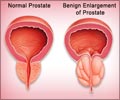Marking a unique milestone in prostate cancer surgery, the director of urologic oncology at The Cancer Institute of New Jersey (CINJ) has completed his 500th robotic prostatectomy
Marking a unique milestone in prostate cancer surgery, the director of urologic oncology at The Cancer Institute of New Jersey (CINJ) has completed his 500th robotic prostatectomy at Robert Wood Johnson University Hospital (RWJUH), the Flagship Hospital of CINJ, which is a Center of Excellence of UMDNJ-Robert Wood Johnson Medical School.
Isaac Kim, MD, PhD, assistant professor of surgery at UMDNJ-Robert Wood Johnson Medical School, performed the operation this week on a patient from Ocean County, New Jersey, with early stage prostate cancer.
Dr. Kim notes the procedure allows for additional precision, reduced blood loss, shorter hospital stays and faster recovery for the patient. "During this four-year stretch leading up to the 500 mark, none of the patients received blood transfusions and the average hospital stay was 1.2 days," he says. "Patients are clearly having positive outcomes."
Patient Daniel Iadonisi's cancer was found during a routine check-up, when his prostate-specific antigen (PSA) level had increased from the previous year. A biopsy confirmed his doctor's suspicion.
The 53-year-old Brick resident had most of his left lung removed ten years ago from an inflammatory disease known as sarcoidosis. The surgical method he chose then, Video-Assisted Thoracic Surgery (VATS), was extremely advanced for its time. Mr. Iadonisi notes he chose Kim and a robotic prostatectomy for many of the same reasons he chose the VATS procedure: "It is minimally invasive, has a faster recovery time and is performed by a top surgeon."
He adds that since he tries to run five miles every day and spend quality time with his wife and four children when not traveling for work, the robotic prostatectomy just made sense. "Because of my active lifestyle, it is important for me to get back to a normal regimen as soon as possible. The robotic procedure will allow me to do that."
Fewer than 20 hospitals across New Jersey offer the procedure, and RWJUH is one of only two hospitals in the state designated to teach other surgeons how to use the robotic system. According to experts, 75 percent of prostate cancer surgeries nationwide are being done via this method. Kim says those figures are sure to increase in the coming years. "As technology continues to improve, we are on our way to seeing this procedure done through the body's natural orifices with no breaks in the skin at all," he says. "But certainly the current method is leaps and bounds over the traditional surgery."
According to the American Cancer Society, one in six men is diagnosed with prostate cancer. It is the most frequently diagnosed cancer in men, other than skin cancer, and the second leading cause of cancer death in men. Last year, 183,000 new cases of the disease were diagnosed nationwide, with the illness affecting more African-American men than those of Asian or Caucasian descent. In New Jersey, there were 5,000 new cases in 2008 with 800 deaths.
SRM






